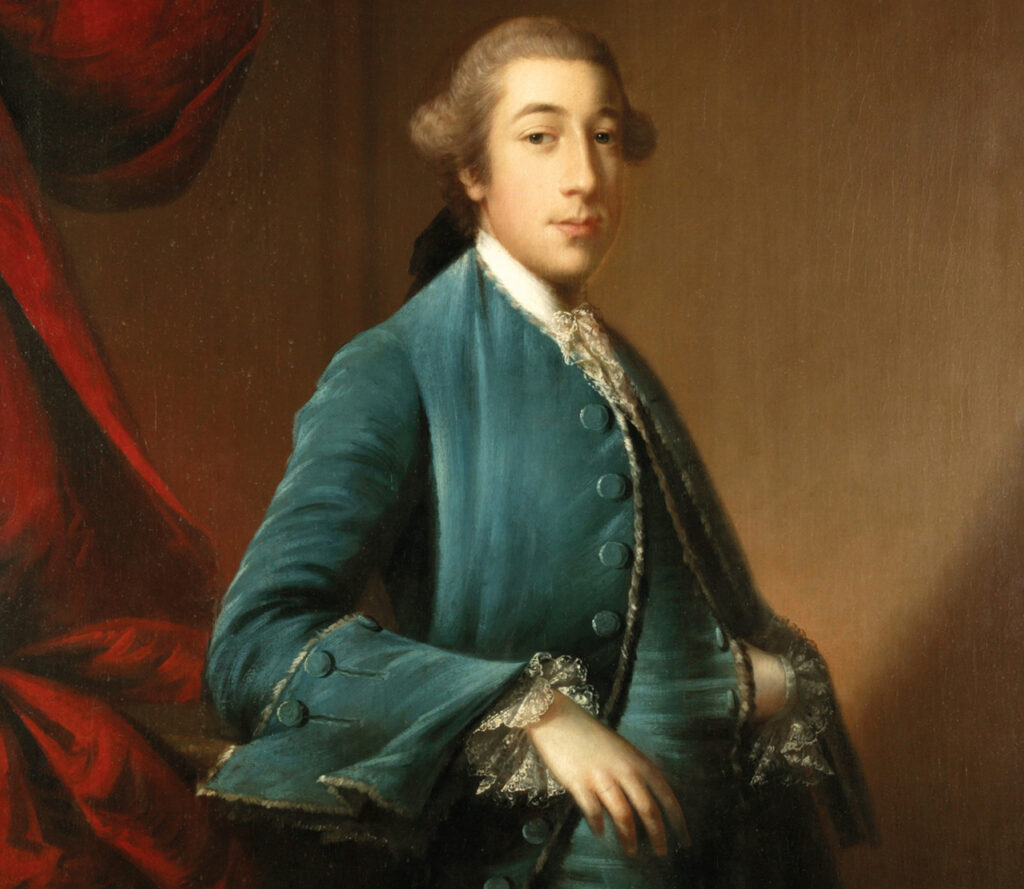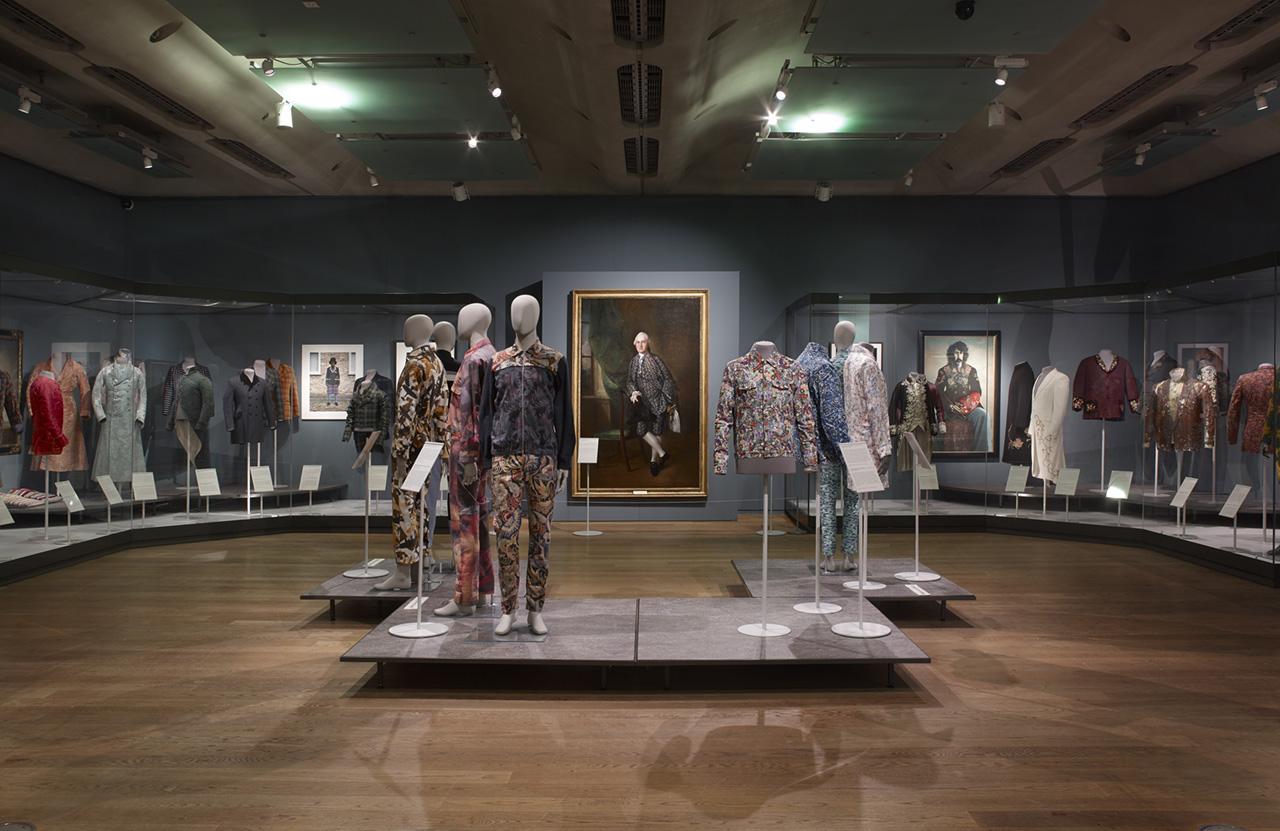Fine and dandy
The sartorial concerns of men over the last 250 years have been charted in a new exhibition. Its curators say you don’t have to look further than the streets of Manchester to find dandyism alive
“Manchester is full of dandies!” says Miles Lambert. “We all know when we see a well-dressed – perhaps a tad over-dressed – man, often self-assured, immaculately groomed and interestingly scented and posed. It’s all in the delivery.”
Lambert’s co-editor of the book Dandy Style: 250 Years of British Men’s Fashion, Shaun Cole, helps give the peacocks strutting the streets of Manchester some historical context.
“Traditionally a dandy has been a purveyor of a restrained men’s style with particular attention to detail.”
“The dandy takes any change in style and personalises it, perfects it, and presents himself to the world after a good deal of care and attention,” adds Lambert.
The pair have co-curated an eponymous exhibition at Manchester Art Gallery’s newly launched Fashion Gallery exploring how concepts such as elegance, uniformity and spectacle have evolved for men over the last two and a half centuries.
The exhibition highlights a range of examples from Manchester’s collections and will be composed of two main sections – Tailored Dandy and Decorated Dandy – combining the historic with the contemporary, the provocative with the respectable.
Alongside never-before-seen pieces from the gallery’s collections and significant loans from other institutions and private lenders, the exhibition also features fine art depicting the dandy from Thomas Gainsborough, Thomas Lawrence, David Hockney and Peter James Field, and photography from David Bailey, Olivia Rose and Jason Evans. Designers highlighted in the collection include Tommy Nutter, Vivienne Westwood, Alexander McQueen and Ozwald Boateng.
“For me the highlight of the exhibition is seeing historic and contemporary British menswear juxtaposed with each other and represented in historic painted and contemporary photographic portraits,” says Cole, an associate professor in fashion at Winchester School of Art who has written extensively on menswear and gay men’s fashion and style. “Having suits worn by Gilbert and George, the tromp l’oeil printed jumpsuit by young designer Charles Jeffrey and the modern take on a men’s suit represented by Nicholas Daley’s tracksuit collaboration with Fred Perry are particularly significant.”
For Lambert, curator of costume at Manchester Art Gallery since 1985, being able to showcase pieces from the gallery’s own collection that he has worked with for over 35 years is the real feather in his cap.

“They have sometimes never been on view before and now they are having their moment,” he says. “The two marvellous smoking jackets from the 1880s, one with embroidered and one with hand-painted decoration, are so suggestive of Oscar Wilde’s fashion choice.
“The early 19th century woollen coats from the 1820s and 1830s are so immaculately tailored and perfectly figure-fitting, and the spitting image of coats worn by men in the portraits which are shown.
“The 18th-century banyan and the 1840s reversible gown show what the fashionable man would wear in a domestic context and relaxing at home. There are many other examples too.”
The evolution of men’s style charted in the exhibition, Cole says, goes from highly decorated luxurious fabrics to a more sombre, restrained palette. We see the development of the tailoring industry in Britain, from traditional bespoke Savile Row clothes to high-street tailors making it more accessible, and recent “rebellious” designs from the likes of Boateng.
Meanwhile, the development of casual dress is charted from the 18th century nobility’s country style, through late 19th century sporting clothes to tracksuits and athleisure of the 20th and 21st centuries.
“But many of the preoccupations of style recur,” points out Lambert. “In our chosen period, 1760-2022, there have been many moves from extravagance towards simplicity and plainness.”
Individuality, he adds, can also be traced through the centuries. Comfort, casualness and a freedom from artificial restraint are crucial to the modern man, he says. “But it’s a rare man who doesn’t occasionally like to dress up, exhibiting a different aspect of his persona.”
Cole agrees that while men have loosened up on one hand, they display restraint through their clothing on the other.
“The codes of men’s style may still be about attention to detail but the ways in which that detail is manifested and put together now allows for a greater fluidity and flexibility in what is fashionable and stylish.”
Dandyism was perfected by Oscar Wilde and Edward VIII but it is Beau Brummell (1778-1840) who is credited as the original. In a 2013 interview with GQ, American designer Tom Ford commented that the Regency figure still lives on in Britain.
“British men are peacocks. You see a lot more style on the streets here than you see anywhere else, on every level.”
Do Cole and Lambert agree with his assessment that British men are sartorial leaders, in comparison to, say, men on the continent?
“There is a long tradition of particular street style in Britian,” says Cole. “It can be seen in gangs of young men in the late 19th century and in the subcultures of the late 20th century, which originated on the streets of Britain.
“That we are such a multicultural country has particularly impacted on the ways in which cultures come together to produce a particularly innovative and varied British menswear style.”
Lambert is unequivocal.
“Tom Ford is one of the most respected designers of recent times. He is clear that British men often exhibit innate fashion sense. This is why Paris fashion houses so often appoint British head designers, like Alexander McQueen and John Galliano.”
Clothing, whether we like it or not, says Cole, reveals something about our identity. “It is one of the first things people see about us and begin to make assumptions and judgements from. How men style themselves can be used to reveal or hide particular aspects about who they are, who they want to be, who they aspire to be and how they want other people to see them.
“But it can also be a reflection of collective identity, showing us how men fit within their peer groups, as well as wider society and culture.”

Leave a reply
Your email address will not be published.